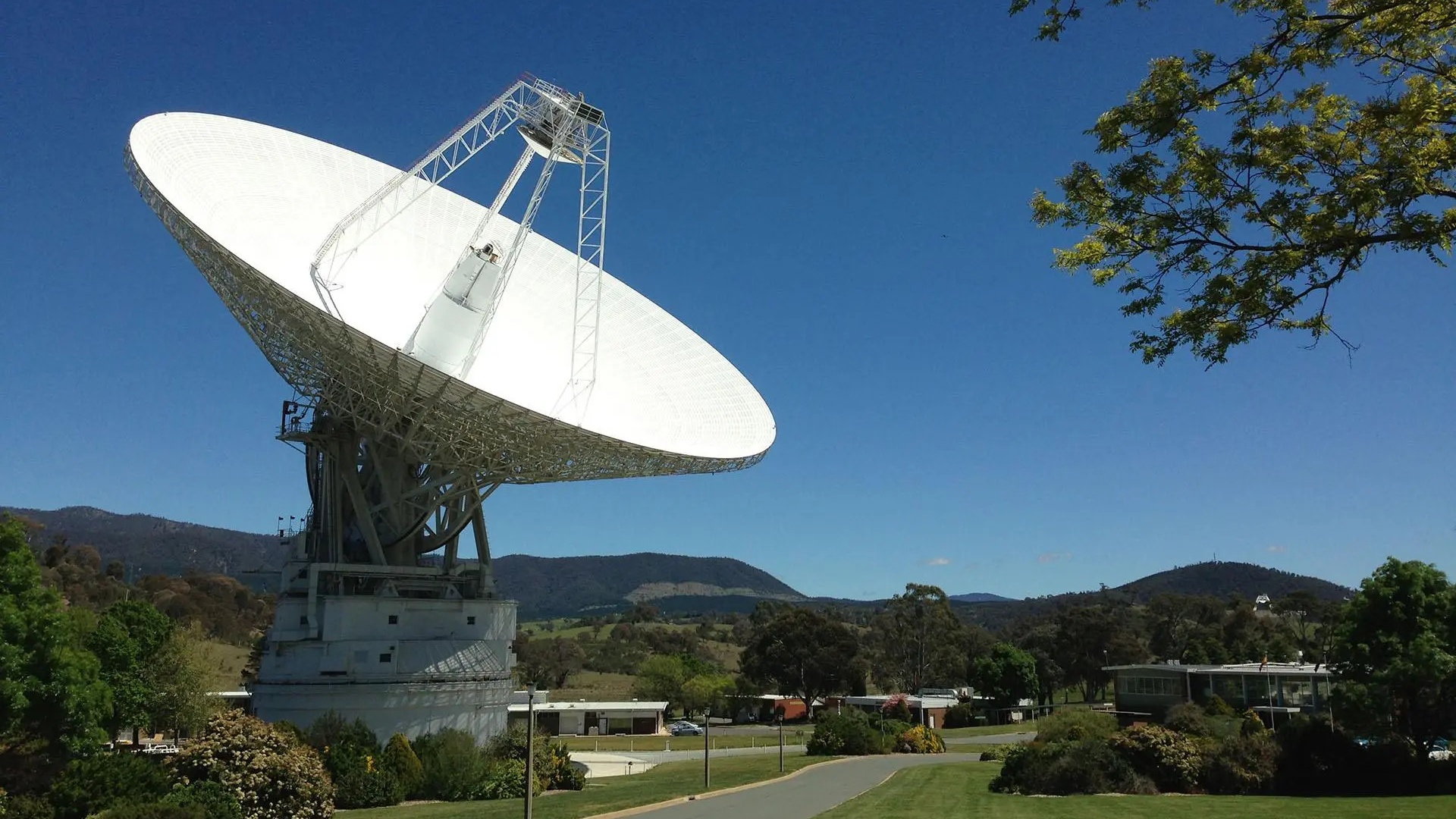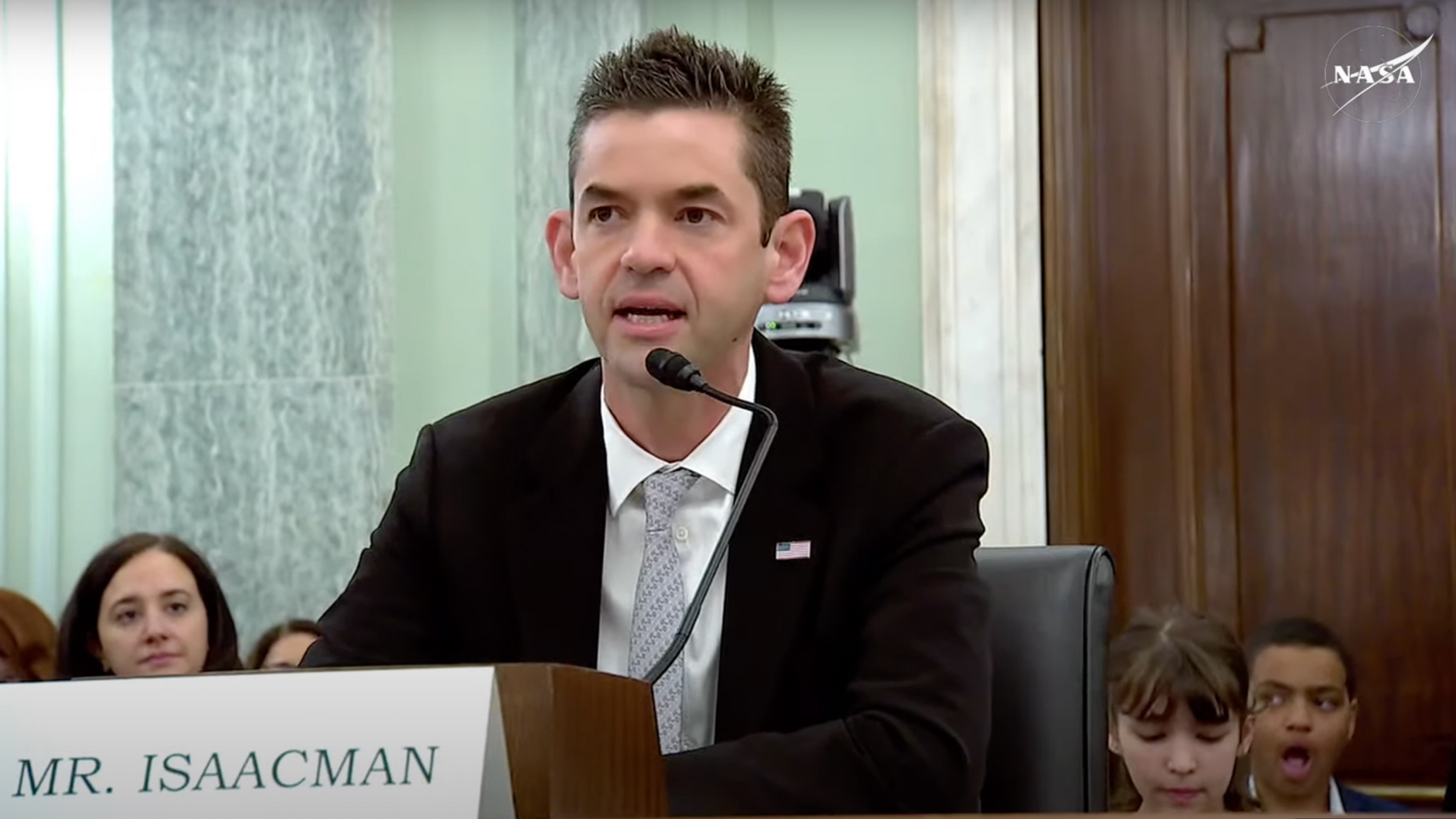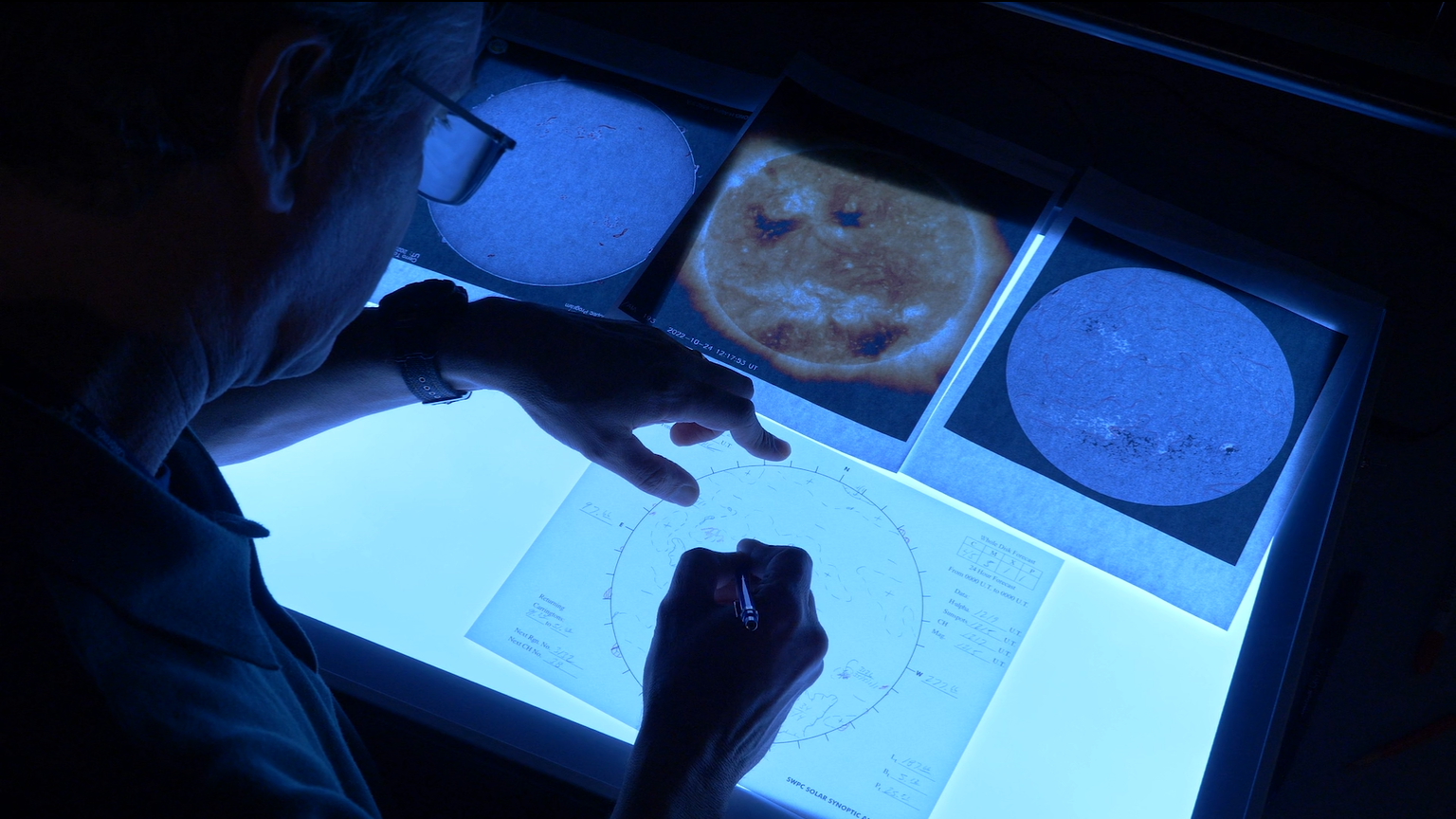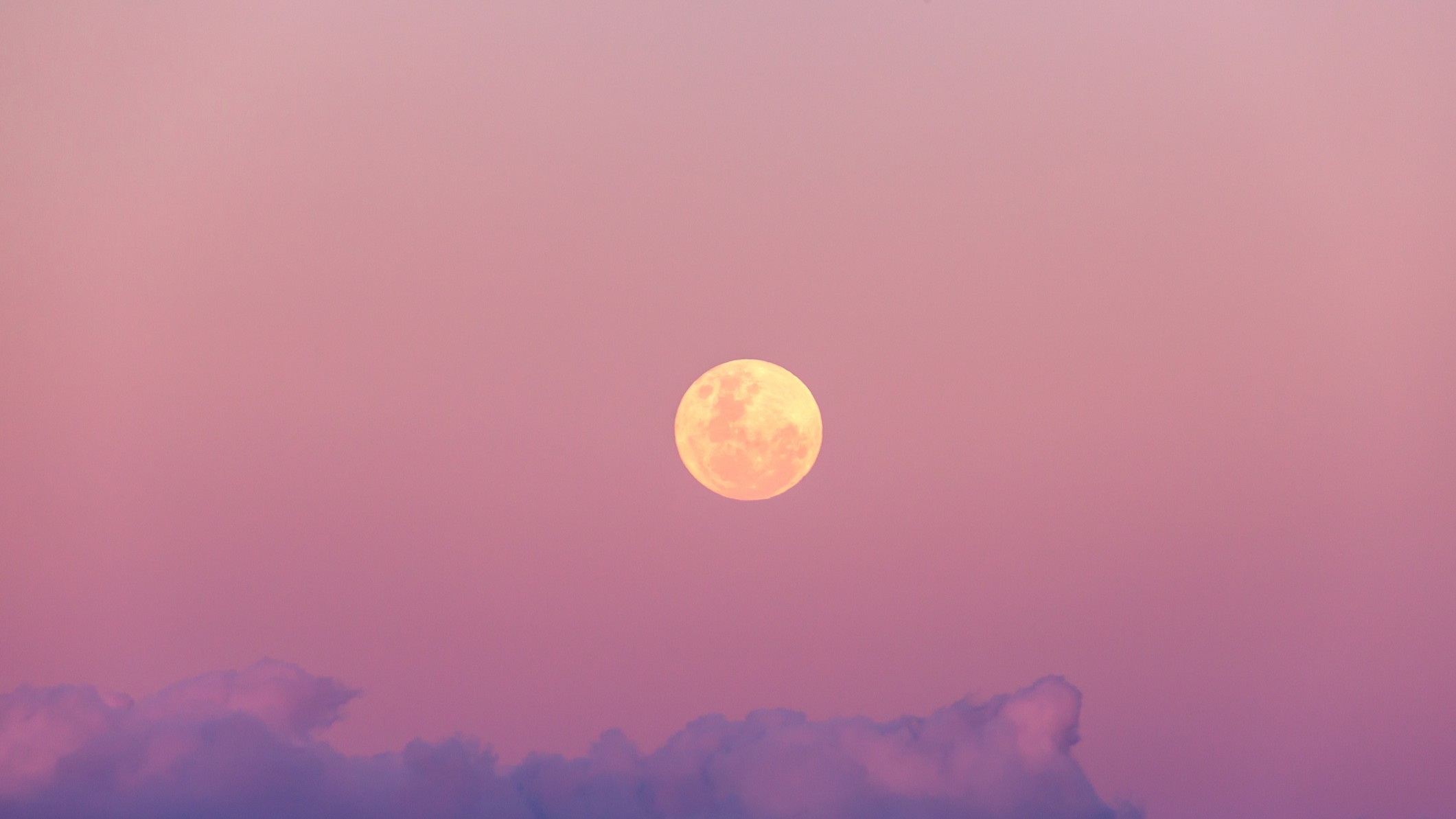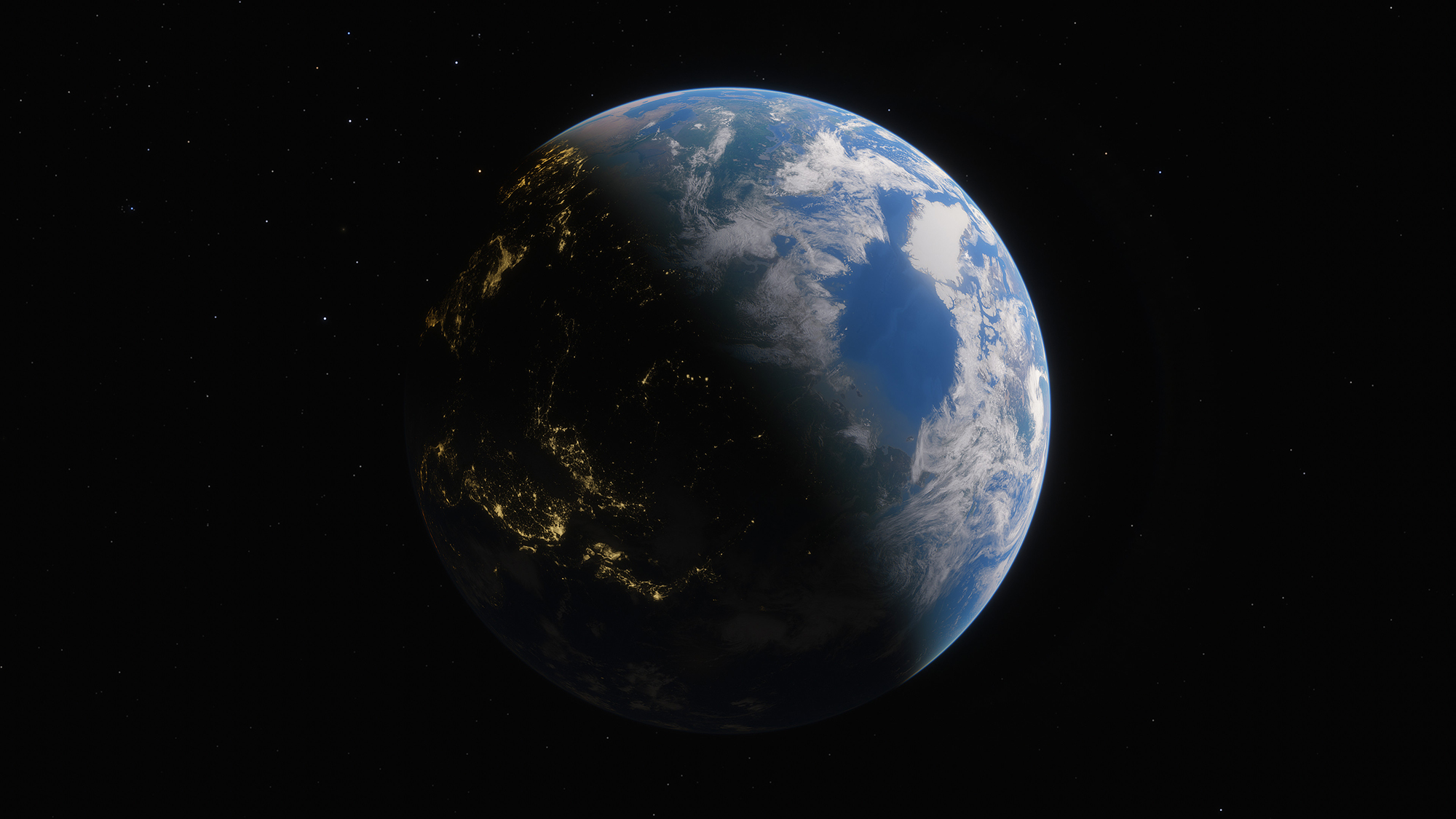
Summer will officially arrive in the Northern Hemisphere on Thursday (June 20) at 4:51 p.m. EDT (2051 GMT) — the June Solstice.
At that moment, the sun will reach the point at which it's farthest north of the celestial equator. To be more precise, when the solstice occurs, the sun will appear to be shining directly overhead for a point on the Tropic of Cancer (latitude 23.5 degrees north) in the eastern Pacific Ocean, roughly 1,100 statute miles (1,800 kilometers) southwest of Los Angeles.
From mid-northern latitudes, we can never see the sun directly overhead, but (as an example) as seen from Boston at 12:46 p.m. EDT on solstice day, the sun will attain its highest point in the sky for this entire year, standing 71 degrees above the southern horizon. To gauge how high that is, your clenched fist held at arm's length measures roughly 10 degrees, so from the city known locally as "The Hub," the sun will appear to climb more than seven fists above the southern horizon. And, since the sun will appear to describe such a high arc across the sky, the duration of daylight will be at its most extreme, lasting 15 hours and 17 minutes.
Twilight zones
But this doesn't mean that we can stargaze for the nearly nine hours remaining on solstice day, because we also need to take twilight into consideration. Around the time of the June solstice, at latitude 40 degrees north, morning and evening twilight each last two hours, so the sky is fully dark for only five hours.
Farther north, twilight lasts even longer. At 45 degrees, it lingers for 2.5 hours, and at 50 degrees, twilight persists through the entire night; the sky never gets completely dark. In contrast, heading south, the duration of twilight is shorter. At latitude 30 degrees, it lasts 96 minutes, while at the latitude of San Juan, Puerto Rico, it lingers for only 80 minutes. That's why travelers from the northern U.S. who visit the Caribbean at this time of year are so surprised at how quickly it gets dark after sunset, compared to back home.
Incidentally, the earliest sunrise and latest sunset do not coincide with the summer solstice. The former occurred on June 14, while the latter does not come until June 27.
Related: The brightest planets in June's night sky: How to see them (and when)
Get the Space.com Newsletter
Breaking space news, the latest updates on rocket launches, skywatching events and more!
So far, so good
Most people are probably under the impression that Earth is closest to the sun in its orbit at this time of year, but actually, it's just the opposite. In fact, on July 5, at 1:06 a.m. EDT (0506 GMT), we'll be at that point in our orbit farthest from the sun (called aphelion), a distance of 94,510,539 miles (152,099,969 km). Conversely, it was back on Jan. 2 that Earth was at perihelion, its closest point to the sun. The difference in distance between these two extremes is 3,106,444 miles (4,999,337 km), or 3.3%, which makes a difference in radiant heat received by Earth of nearly 7%. Thus, for the Northern Hemisphere, the difference should warm our winters and cool our summers.
However, in reality, the preponderance of large land masses in the Northern Hemisphere works the other way, generally making our winters colder and our summers hotter than those of the Southern Hemisphere.
Interestingly, it would be a much different story if we were on Mars. Compared to our nearly circular orbit, the Red Planet's orbit is noticeably more eccentric (elliptical). When Mars arrives at aphelion, it is receiving only 69% as much sunlight as it does at perihelion. This situation creates a seasonal asymmetry; Mars' southern hemisphere always experiences greater extremes between summer and winter than the northern hemisphere.
After Aug. 6, it 'gets late early'
After the sun arrives at its solstice point, it will begin to migrate back toward the south, and the amount of daylight in the Northern Hemisphere will begin to decrease. Consider this: After June 20, day length will not begin to increase again until three days before Christmas. But actually, if you think about it, the sun has been taking a high arc across the sky, and the length of daylight has been rather substantial since about the middle of May. And the lowering of the sun's path in the sky and the diminishing of the daylight hours in the coming days and weeks will, at least initially, be rather subtle.
Aug. 1 is marked on some Christian calendars as Lammas Day, whose name is derived from the Old English "loaf-mass," because it was once observed as a harvest festival and was traditionally considered to be the middle of the summer season. In actuality, however, summer's midpoint — that moment that comes exactly between the summer solstice and the autumnal equinox in 2024 — will not occur until Aug. 6 at 12:47 p.m. EDT (1647 GMT). On that day, again, as seen from Boston, the sun will set at 7:56 p.m., with the loss of daylight since June 21 amounting to just 63 minutes.
But it is in the second half of summer that the effects of the southward shift of the sun's direct rays start becoming much more noticeable. In fact, when autumn officially arrives on Sept. 22, the sun for Bostonians will be setting well before seven in the evening (6:41 p.m.), while the length of daylight will have been reduced by more than two hours (two hours and 6 minutes, to be precise) since Aug. 6.
Baseball Hall of Famer Yogi Berra mostly played catcher for the Yankees. He occasionally played left field, however, and said that he didn't mind the outfield, except during August and September. During that time of year, the shadows across the ballfield progressively lengthened in the afternoon, making it increasingly difficult for him to see a baseball hit in his direction. Yogi might not have been able to explain the science of why the altitude of the sun lowered so perceptibly during the latter half of the summer, but — as only Yogi could do — he was able to sum it all up in a simple Yogism: "It's getting late early out there."
Joe Rao serves as an instructor and guest lecturer at New York's Hayden Planetarium. He writes about astronomy for Natural History magazine, the Farmers' Almanac and other publications.
Join our Space Forums to keep talking space on the latest missions, night sky and more! And if you have a news tip, correction or comment, let us know at: community@space.com.

Joe Rao is Space.com's skywatching columnist, as well as a veteran meteorologist and eclipse chaser who also serves as an instructor and guest lecturer at New York's Hayden Planetarium. He writes about astronomy for Natural History magazine, Sky & Telescope and other publications. Joe is an 8-time Emmy-nominated meteorologist who served the Putnam Valley region of New York for over 21 years. You can find him on Twitter and YouTube tracking lunar and solar eclipses, meteor showers and more. To find out Joe's latest project, visit him on Twitter.
-
billslugg "At that moment, the sun will reach the point at which it's farthest north of the celestial equator."Reply
I think they mean "the Earth's equator".


